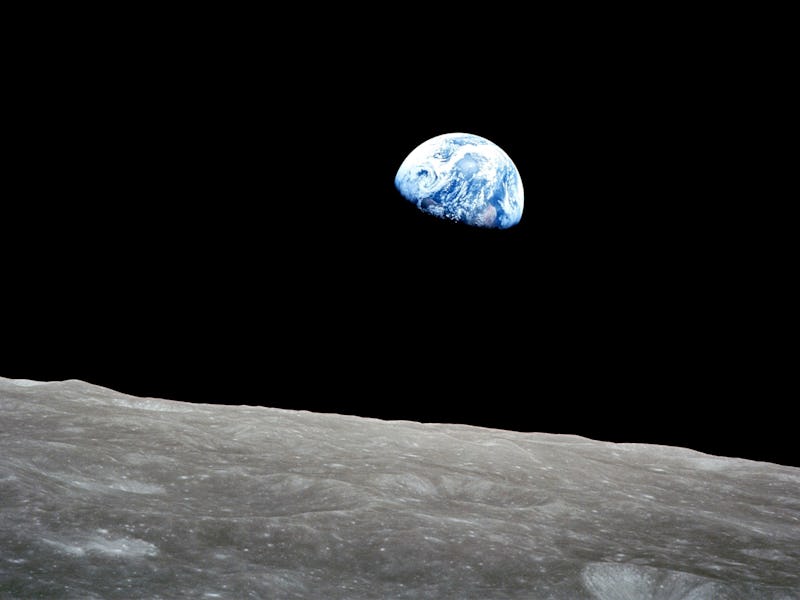Humans Have Permanently Changed the Composition of Earth
Nearly one in 20 of the minerals on this planet today arise through human activity.

Human activities have created an explosion of mineral diversity on this planet, according to new research published Wednesday in American Mineralogist. The research catalogs 208 minerals that occur in places where humans have disturbed nature, out of about 5,200 minerals officially recognized by the International Mineralogical Association. The findings add weight to the notion that humans have pushed Earth into a new epoch, commonly though not yet officially dubbed the Anthropocene.
“It took 4.5 billion years to get to 5,000, and then these last 200 occurred in just a blink of an eye, just a tiny, tiny fraction of the previous time,” lead author Robert Hazen tells Inverse. “This is the fastest, most rapid increase in mineral diversity in Earth’s history.”
Fundamentally, a mineral is a crystal with particular chemical composition and structure. They arise naturally on this planet through physical, chemical, and biological process. As life on Earth became more diverse and complex, so too did its mineral composition.
But humans interact with this planet in ways that are completely different from anything found in nature. For example, many of the 208 human-caused minerals on Hazen’s list are found in mine tunnels, where the mining activities create physical environments unlike anything that occurs naturally on Earth.
Mine tunnels are a rich source of anthropogenic minerals.
Why Humans Have Changed the Earth’s Make-Up So Quickly
“Humans have cut a slice right through the middle of a mountain, or an outcrop, and now you’ve exposed rocks to the air that never would have been exposed otherwise,” says Hazen. “But they’re not exposed to sunlight, they’re not exposed to rain, they have a particular humidity in those mine tunnels that’s quite different from what you’d find in any sort of natural setting, and so minerals just grow. They grow from the water that’s flowing out of the rock, or the groundwater that slowly percolates through — it’s very mineral-rich, and so you deposit these beautiful green or yellow or orange crystals on the walls of mines.”
Calclacite is the Most Meta of Minerals
His favorite of the 208, though, is called calclacite, and it’s terribly meta. The mineral is found only in oak storage drawers in museums, where collectors have placed minerals, and then those minerals react with acids excreted from the wood. “You produce a new mineral that’s a brand new mineral, that’s only the result of a mineral collector coming along and sticking that mineral specimen in an oak drawer.”
The bigger picture of this is that human activities have dramatically changed the mineral composition and distribution of this planet, and those changes will leave imprints on the Earth for billions of years. It’s not just these 208 human-mediated minerals that will mark the stratigraphy of the Anthropocene, but also the many mineral-like human materials that have proliferated across the planet, like bricks and concrete, and the vast disturbances to the mineral world caused by human activities.
If future (perhaps alien) geologists examine the geology of this time hundreds of millions of years from now, they will see something quite different about the stratigraphic layer of the human era. “What they’re going to see is just an unbelievable diversity of crystals,” says Hazen. “Because they are minerals, many of these will persist for billions of years. The minerals that get buried in this layer of sediment will be virtually forever.”
Abstract
The “Anthropocene Epoch” has been proposed as a new post-Holocene geological time interval — a period characterized by the pervasive impact of human activities on the geological record. Prior to the influence of human technologies, the diversity and distribution of minerals at or near Earth’s surface arose through physical, chemical, and/or biological processes. Since the advent of human mining and manufacturing, particularly since the industrial revolution of the mid-eighteenth century, mineral-like compounds have experienced a punctuation event in diversity and distribution owing to the pervasive impact of human activities. We catalog 208 mineral species approved by the International Mineralogical Association that occur principally or exclusively as a consequence of human processes. At least three types of human activities have affected the diversity and distribution of minerals and mineral-like compounds in ways that might be reflected in the worldwide stratigraphic record. The most obvious influence is the widespread occurrence of synthetic mineral-like compounds, some of which are manufactured directly for applications (e.g., YAG crystals for lasers; Portland cement) and others that arise indirectly (e.g., alteration of mine tunnel walls; weathering products of mine dumps and slag). A second human influence on the distribution of Earth’s near-surface minerals relates to large-scale movements of rocks and sediments — sites where large volumes of rocks and minerals have been removed. Finally, humans have become relentlessly efficient in redistributing select natural minerals, such as gemstones and fine mineral specimens, across the globe. All three influences are likely to be preserved as distinctive stratigraphic markers far into the future.